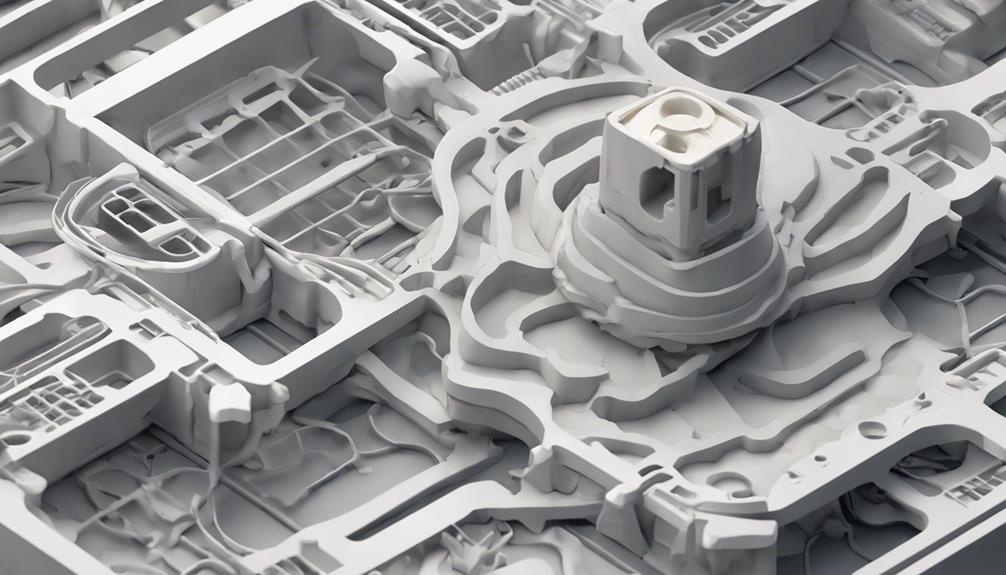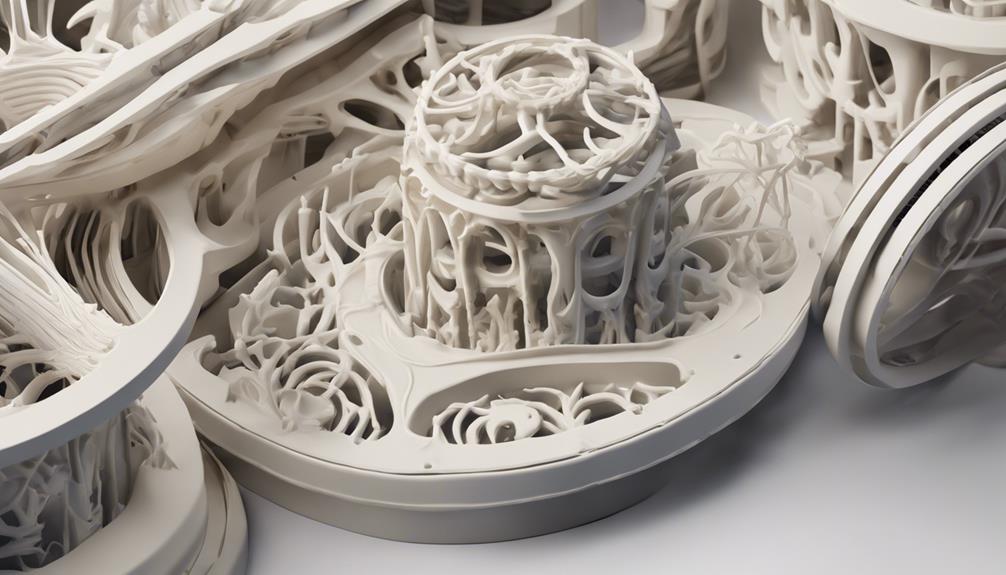When delving into the world of 3D printing, you may have encountered various advancements, but Cura's Adaptive Layer Innovation propels this technology into a new domain of efficiency and quality. The ability to dynamically adjust layer heights for best results piques your curiosity as you wonder about the extent of improvement this innovation can bring to your 3D printing projects.
Adaptive Layer Slicing in Cura

Introducing in Cura v3.2.0, Adaptive Layer Slicing revolutionizes 3D printing by dynamically adjusting layer height to optimize print time and surface quality. This feature automatically adapts the layer height for curved sections of your model, striking a balance between speed and detail.
By adjusting the layer height based on the complexity of the geometry, printing time is reduced without sacrificing the surface finish. With Adaptive Layer Slicing, you can achieve smoother surfaces and intricate details in your prints, especially in designs with curved elements.
This innovation guarantees that your prints aren't only completed faster but also exhibit a higher level of quality, enhancing the overall printing experience.
Advantages and Usage of Adaptive Layers
Adaptive Layer Slicing in Cura offers significant benefits by dynamically adjusting layer height based on section shapes, enhancing print quality and reducing production time.
By adapting layer height to the geometry of the model, you can achieve smoother surfaces on curved areas, reducing the need for extensive post-processing. This feature not only saves you time but also minimizes material usage, making it cost-effective.
The adaptive layers are particularly useful for designs with intricate details or curved walls, where traditional fixed-layer slicing may struggle to maintain quality.
Incorporating adaptive layers into your printing process can streamline production, leading to faster turnaround times and improved overall print quality.
Configuring and Adjusting Adaptive Layers

To configure and adjust adaptive layers in Cura, access the advanced configuration mode and enable the feature in Experimental settings. Once activated, tweak the settings to suit your needs before slicing the model.
You'll notice a significant reduction in print time as the software dynamically adjusts layer heights. Fine-tune parameters like maximum variation, step size, and threshold to tailor the adaptive layering process. Experiment with different settings to find the best balance between print speed and quality.
Remember to adjust the settings according to your specific model requirements. By utilizing adaptive layers effectively, you can enhance the efficiency of your 3D printing process while maintaining high-quality print results.
Considerations and Examples With Adaptive Layers
When considering adaptive layer usage, nozzle dimensions play an important role in determining the appropriate layer height for your 3D prints. The nozzle size directly impacts the maximum layer height that can be achieved.
It's important to note that changing the layer height mid-print isn't recommended, as it can result in print quality issues. For example, when printing a chess piece, using adaptive layers saved 3 minutes compared to traditional slicing methods, representing an 8.6% reduction in time.
This highlights the practical benefits of adaptive layer technology in optimizing print time and efficiency. By understanding how your specific nozzle size affects layer height, you can make informed decisions to enhance the quality and speed of your 3D prints.
Feedback and Recommendations

Considering the benefits of adaptive layer technology in reducing print time and improving efficiency, it's important to acknowledge the feedback received and provide relevant recommendations for users.
Users have praised the time-saving advantages of adaptive layers, noting significant reductions in print time and material usage. However, as this feature is still experimental, some users have encountered issues with its functionality.
To address this, it's recommended to regularly update Cura to access the latest improvements and bug fixes related to adaptive layer slicing. Additionally, providing detailed tutorials or guides on optimizing adaptive layer settings based on specific print requirements could enhance user experience and guarantee successful implementation of this innovative technology.
Your input and suggestions can contribute to the ongoing development and refinement of adaptive layer features in Cura.
Frequently Asked Questions
Can Adaptive Layers Be Used With Any 3D Printer Model?
Yes, adaptive layers can be used with any 3D printer model. They optimize print time and quality by adjusting layer height based on section shape. Enable in Cura's Experimental settings for efficient printing.
Does Adaptive Layer Slicing Impact the Strength of Printed Parts?
Adaptive layer slicing doesn't compromise strength. It optimizes print time and quality. Experiment with settings in Cura. Avoid changing mid-print. Enjoy smoother curves and detailed finishes. Slice smart, print strong, and save time.
How Does Adaptive Layer Slicing Affect Print Speed?
Adaptive layer slicing in Cura speeds up prints by adjusting layer height for curved areas, balancing time and quality. Reduce print time, enhance quality, and smooth intricate details. Configure in Cura's settings for best results.
Are There Any Specific Materials Recommended for Adaptive Layers?
For adaptive layers in Cura, you're encouraged to try various materials to see how they impact print quality. Experiment with recommended options to enhance results and discover your preferred settings for peak performance.
Can Adaptive Layers Be Used for Functional Parts or Only Prototypes?
Yes, adaptive layers can be used for both functional parts and prototypes. They adapt layer height based on section shape, reducing print time and enhancing quality. Smooth hard-to-reach areas and are ideal for designs requiring detailed finish.
Conclusion
As you explore further into the world of 3D printing with Cura's adaptive layer innovation, you'll discover endless possibilities for creativity and efficiency.
Stay tuned for the latest updates and tutorials to continue pushing the boundaries of what's possible in the domain of 3D printing.
The future of additive manufacturing is bright with Cura leading the way, so keep experimenting and exploring to see where this innovative technology will take you next.